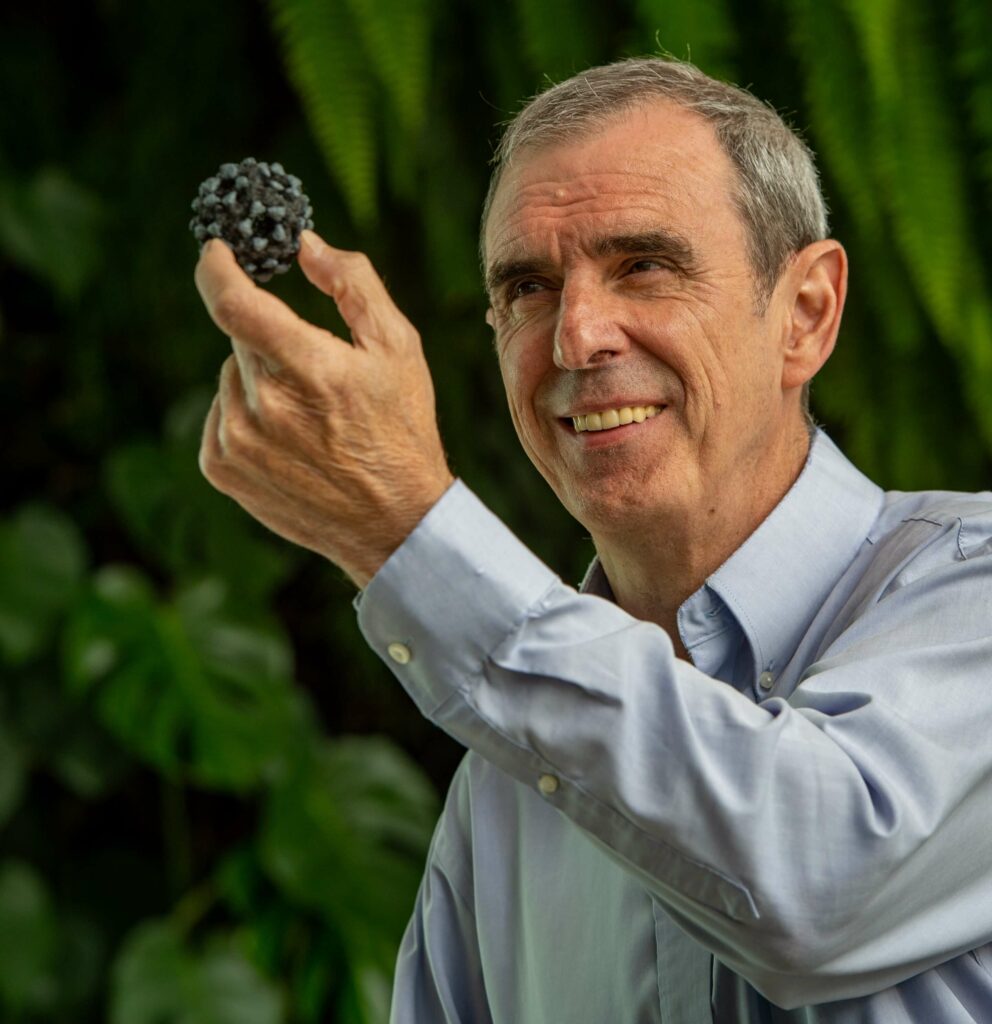
Many COVID-19 vaccines work by presenting fragments of the SARS-CoV-2 spike protein – the receptor-binding domain (RBD) – to the body to generate an immune response. However, newly arising SARS-CoV-2 variants are increasingly able to evade this response due to mutations in the changeable regions of their RBDs, potentially comprising the efficacy of existing vaccines.
In response to this challenge, Ingenza embarked on a project with Caltech, the University of Oxford and the Centre for Process Innovation (CPI) to develop a novel, broad-spectrum vaccine that could elicit immunity to both known and possible future strains of the virus. In summer 2022, the project was given additional funding, and the consortium began working towards establishing the first-in-human clinical proof of concept. This blog provides another exciting update on this crucial research, and outlines how it takes us one step closer to a universal COVID-19 vaccine.
Marking milestones in nanoparticle vaccine development
This pioneering project was initiated to advance the original vaccine candidate developed by Caltech and the University of Oxford. The new vaccine is designed to focus the immune response on conserved regions of the RBD, which are shared by all viruses in the SARS-like betacoronavirus family. Based on a so-called ‘mosaic-8b’ nanoparticle, it includes RBDs from SARS-CoV-2 and seven other coronaviruses. The conserved regions of these RBDs should therefore also be present and unchanged in as-yet-undiscovered sarbecoviruses, as well as novel variants of SARS-CoV-2 that may emerge in the future.
Ingenza was responsible for transferring the production of this vaccine candidate from mammalian cells to microbial platforms, Pichia pastoris and Bacillus subtilis, to reduce the time and cost involved in product development. Using microbial systems will also enable more cost-effective scale-up of manufacturing for worldwide distribution further down the line, providing more equitable vaccine access. Ingenza developed these custom microbial strains, associated scalable bioprocesses and analytical methods using its proprietary inGenius™ platform, a set of several different modules structured to efficiently and predictably progress bioprocess development.
A huge leap forward in COVID-19 vaccine innovation
The consortium’s initial research was published in Science in 2022, and suggested that these mosaic-8b nanoparticles elicit protective immune responses against SARS-like betacoronaviruses that feature components displayed on the mosaic-8b nanoparticle, as well as other related viruses from which no components were displayed.11 These viruses include the SARS-like betacoronaviruses already found in animals, which are the most likely viruses to make the jump to humans. Based on these early promising results, the project secured additional funding and entered extensive preclinical trials.
The majority of humans receiving a mosaic-8b vaccine in the future would have already been exposed to SARS-CoV-2. These studies aimed to test the efficacy of the mosaic-8b vaccine in generating an immune response following prior vaccination or exposure to the SARS-CoV-2 virus. The trials were also used to compare this response with that elicited by a homotopic admixture comprised of eight separate vaccine nanoparticles, each presenting one distinct RBD. Initial preclinical trials have now concluded, and detailed findings from the latest stage of this dynamic research project have recently been published, with extremely encouraging results! The study showed that mosaic-8b nanoparticles generated both recall antibodies – enhanced from prior immune responses – and broadly cross-reactive de novo antibodies for multiple sarbecoviruses, including those more distantly related to SARS-CoV-2. These antibodies were more effective in recognising various viral strains compared to the homotypic nanoparticles in the admixture. Interestingly, the antibodies elicited by mosaic-8b also demonstrated stronger binding and neutralising titres than traditional homotypic SARS-CoV-2 vaccines.
In addition, the trials provided insights into original antigenic sin (OAS), where the immune system preferentially uses memory cells from a first disease exposure when encountering related antigens. Mosaic-8b can overcome some of the limitations posed by OAS by inducing new antibodies that target distinct and diverse sarbecovirus RBDs, rather than only boosting production of those preexisting antibodies for specific SARS-CoV-2 strains. Altogether, these outcomes indicate that administering a single dose of mosaic-8b vaccine could elicit a more broadly protective immune response in non-immunologically naive individuals than a single dose of a typical SARS-CoV-2 homotypic vaccine. This could mean that mosaic-8b would provide broader and longer-lasting protection against diverse and evolving strains of SARS-CoV-2 and other sarbecoviruses.
What’s next for mosaic-8b?
The latest research performed by the consortium supports the use of the mosaic-8b vaccine as a broad and cross-reactive immunisation strategy that provides comprehensive protection against known and unknown sarbecoviruses. Mosaic-8b could also serve as a template for developing next generation vaccines that do not need frequent updates, unlike monovalent or bivalent vaccines that target specific variants, and therefore need updating regularly. The next stage of this groundbreaking project is to advance the mosaic-8b molecule into a final round of preclinical trials, with the aim of entering human clinical trials in the not-too-distant future, taking us ever nearer to a market-ready vaccine. Ingenza is already involved in generating the material needed for the toxicology and immunology studies that will form vital components of these upcoming investigations, and we’re looking forward to keeping you up to date with ongoing progress. We’ll share more about these exciting advancements as additional information is released, so watch this space!
References
- Cohen AA, van Doremalen N, Greaney AJ, et al. Mosaic RBD nanoparticles protect against challenge by diverse sarbecoviruses in animal models. Science (1979). 2022;377(6606). doi:10.1126/science.abq0839 ↩︎